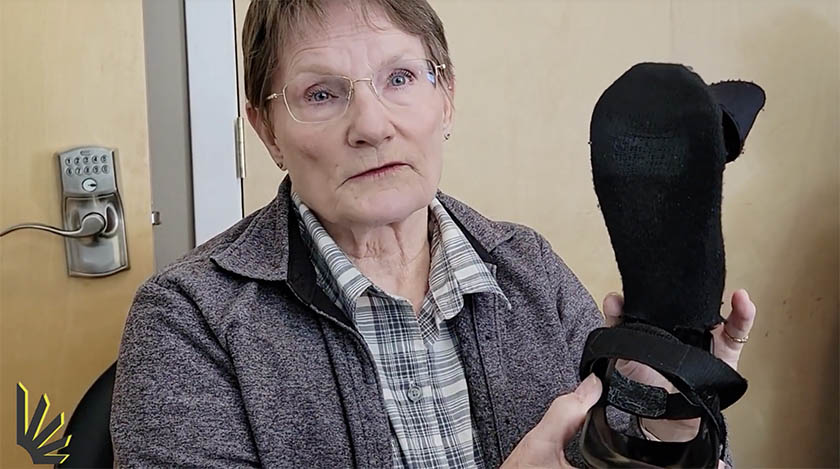
Using a Drop Foot Brace – A Guide for Stroke Patients
It has been estimated that as many as 20% of stroke survivors may experience drop foot (also known as foot drop). Drop foot involves difficulty
Solution for Post Tib or Posterior Tibial Tendon dysfunction (PTTD) and related biomechanics – custom brace (AFO) solution for Post Tib tendonitis that may help avoid the need for surgery.
Video Transcript:
In this video, we’re going to explore bracing techniques used to treat medial instability, specifically the principles used by the Blaze Brace. We like to use the term medial instability since there are many names and conditions that fit this general term. For instance, somebody in the podiatry field might call it posterior tib, an orthotist might refer to it as external rotatory deformity and a PT might just call it flatfoot. Each profession has a slightly different take on the subject, but for our discussions here, broadening the term to medial instability works for us. Here are some examples of what medial instability looks like.
For those that have treated this condition with bracing, you are likely to be familiar with the typical issue of the medial malleolus driving into the medial upright during midstance. The Blaze Brace is designed to address this inevitability by moving the joint up and away from the medial malleolus and replacing it with a malleolar window. This breaks the rule that we’re all taught in school, which says the orthotic joint must be aligned with the anatomical joint. Our company broke that myth and discovered that we can make a more comfortable and effective brace with our malleolar window. Here you can see that the malleolus lands within the window, making the pressure distribution comfortable and supportive, while the orthotic joint located just above and posterior to the medial malleolus is out of the way. The US Patent Office gave us a patent for this discovery.
Orthotists typically use pressure underneath the sustentaculum tali as a proven pressure-tolerant area to achieve correction for the patient. We agree, and the Blaze Brace utilizes this method by adding a distinctive and identifiable ST pad. The outcome of this combination of strategies is a derotation of the tibiotalar mortise, which results in the reduction of posterior tibial strain and results in patient relief. Our use of the fifth ray cutout improves the relationship between the medial and lateral columns of the foot and allows for more correctional opportunities on the medial side while allowing for easier fitting into the shoe. Here you can see typical force strategies that are used in tall braces. Notice the force vector at the top. Our short braces can’t use that leverage because it’s short. Turns out, however, that this isn’t very consequential. These three-point pressure systems are only relevant during swing phase when the pressures are small. Once a foot hits the ground, everything changes.
By design, the Blaze Brace utilizes a medial extrinsic post and a medial distal extension, which leverages the ground reaction force for maximal correction. This translates into a powerful fourth force vector that more than replaces the leverage lost with the tall brace.
One of the challenges traditional brace designs have been faced with is the control of forefoot abduction. Without a shoe our Blaze Brace looks ill-fitting; their forefoot abducts freely. This is not how the brace is used, of course. The Blaze Brace is designed to work effectively within the shoe. The medial distal extension of the brace recruits the shoe, and then the shoe acts like a clamp and prevents forefoot abduction.
The Blaze Brace is a custom orthosis that requires an impression and fitting from a healthcare professional such as an orthotist or podiatrist. What sets our company apart is that the Blaze Brace is custom-designed, not just custom-fabricated. The articulated design of the Blaze Brace makes it easy to translate over the foot while providing the best possible and most comfortable correction.

It has been estimated that as many as 20% of stroke survivors may experience drop foot (also known as foot drop). Drop foot involves difficulty

Having drop foot may increase your risk of tripping and falling in everyday situations that you otherwise hadn’t encountered beforehand. If you’ve been recently diagnosed

My first brace was an immobile one. It didn’t allow me any freedom at the ankle or the foot
367 U.S. Route 1, Suite 5-S
Falmouth, ME 04105
(207) 885-0414
faq@insightfulproducts.com

Site by Fisher Green Creative. LLC